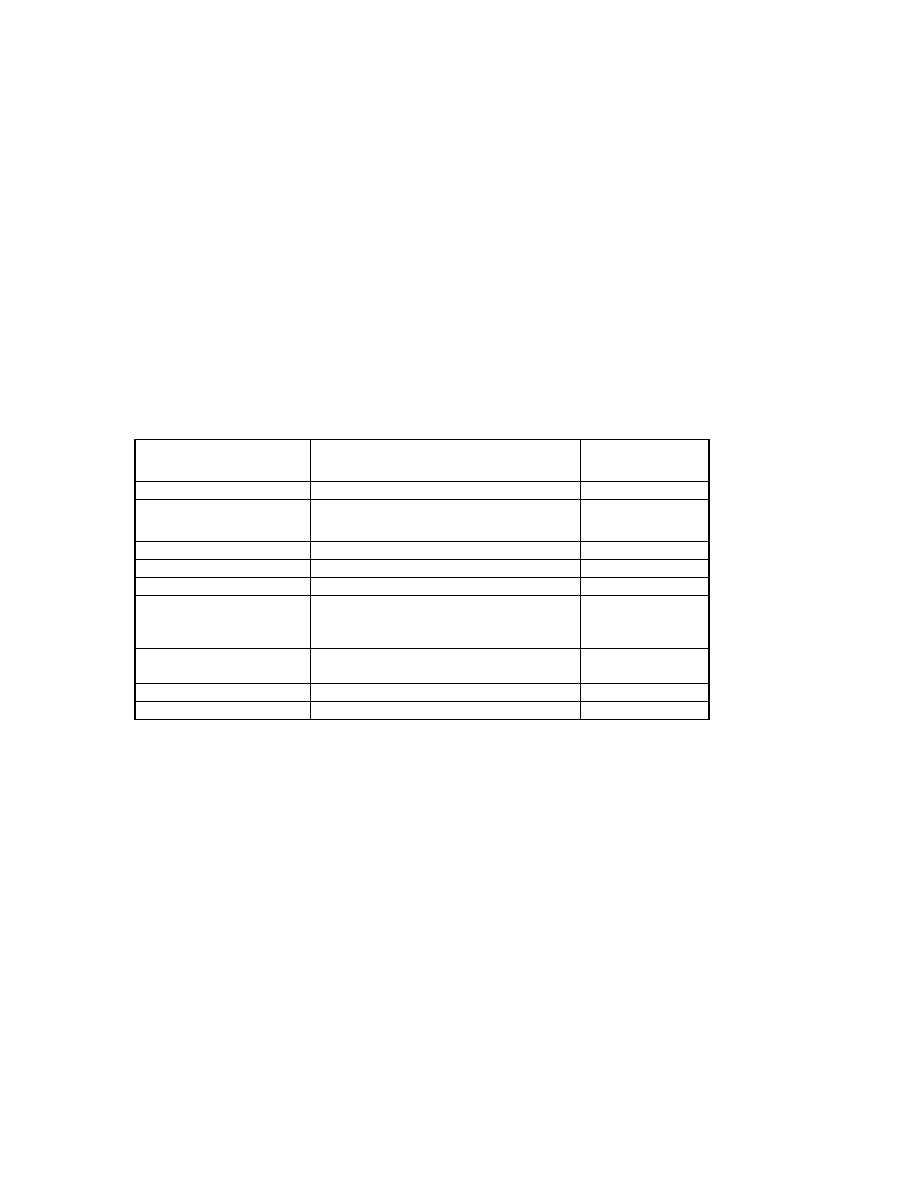

25
H.
Lubricant Suppliers
Standards for lubricants are set by the automotive, truck, and engine companies. Not
surprisingly, the lubricant industry, which consists of the oil companies and the additive
suppliers, is dealing with the same issues that their customers face. The oil companies produce
the base stock a mineral or synthetic oil that essentially determines the fluidity of the
lubricant. As shown in Table 6, additive suppliers must deal with a wide range of properties,
including temperature effects on fluidity, contaminant control, rust protection, cleanliness, acid
neutralization, wear control, oxidation protection, friction reduction, and foam control. Additive
chemistry is extremely complicated and still largely empirical. The effect of any given additive
might be strongly influenced by other additives in the lubricant formulation.
surprisingly, the lubricant industry, which consists of the oil companies and the additive
suppliers, is dealing with the same issues that their customers face. The oil companies produce
the base stock a mineral or synthetic oil that essentially determines the fluidity of the
lubricant. As shown in Table 6, additive suppliers must deal with a wide range of properties,
including temperature effects on fluidity, contaminant control, rust protection, cleanliness, acid
neutralization, wear control, oxidation protection, friction reduction, and foam control. Additive
chemistry is extremely complicated and still largely empirical. The effect of any given additive
might be strongly influenced by other additives in the lubricant formulation.
Table 6. Functions of a Lubricant
Lubricant Marketer Formula Component
Possible
Elements
Fluidity
Mineral or synthetic oil
H, C, O
Additive Supplier
Multigrade
Viscosity modifier
Low-temperature flow
Pour-point depressant
Suspend contaminants
Ashless dispersant
N, B
Rust protection
Cleanliness
Acid neutralization
Cleanliness
Acid neutralization
Detergent
Ca, Mg, Na
Wear control
Oxidation protection
Oxidation protection
Zinc dithiophosphate
Ashless antioxidants
Ashless antioxidants
Zn, P, S
N
N
Friction reduction
Friction modifier
Mo, S
Foam control
Antifoam
Si
For the heavy-duty vehicle market, oil and additive suppliers are focusing on supporting efforts
to reduce emissions. Sulfur in the lubricating oil may contribute more sulfur compounds to the
exhaust than will future ultra-low-sulfur fuels
to reduce emissions. Sulfur in the lubricating oil may contribute more sulfur compounds to the
exhaust than will future ultra-low-sulfur fuels
6
(see Figure 8), and in some operating modes, the
lubricant can account for up to 60% of particulate emissions. As stated previously, EGR will
introduce much higher levels of soot into the lubricant, requiring new properties to prevent wear.
Virtually all lubricants contain sulfur and phosphorus in the form of zinc dithiophosphate, which
is needed in areas of very high contact pressures, such as the valve train. Both sulfur and
phosphorus are serious poisons for catalysts in exhaust gas aftertreatment devices, but, to date,
no effective substitute for zinc dithiophosphate is available.
introduce much higher levels of soot into the lubricant, requiring new properties to prevent wear.
Virtually all lubricants contain sulfur and phosphorus in the form of zinc dithiophosphate, which
is needed in areas of very high contact pressures, such as the valve train. Both sulfur and
phosphorus are serious poisons for catalysts in exhaust gas aftertreatment devices, but, to date,
no effective substitute for zinc dithiophosphate is available.
The cost of conducting a single engine test is approximately $60,000. To fully qualify a
lubricant, a number of engine tests and development feedback loops are often required. Such
costs are becoming prohibitive. With increasingly rapid changes in standards, particularly with
respect to emissions, it is becoming more important to develop reliable cost-effective bench-
scale laboratory tests that are predictive of full-scale engine performance.
lubricant, a number of engine tests and development feedback loops are often required. Such
costs are becoming prohibitive. With increasingly rapid changes in standards, particularly with
respect to emissions, it is becoming more important to develop reliable cost-effective bench-
scale laboratory tests that are predictive of full-scale engine performance.